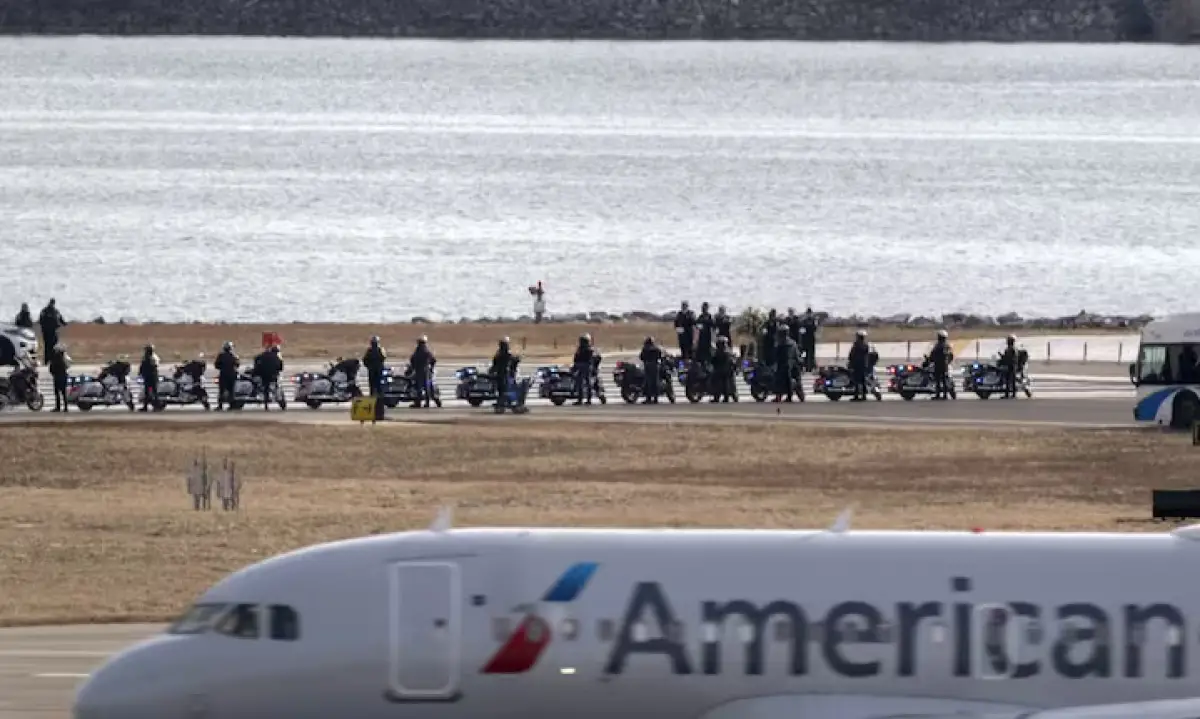A Fatal Air Collision: Black Box Retrieval and Ongoing Investigation
In a devastating and shocking aviation tragedy, a mid-air collision between an American Airlines commercial airliner and a US Army Black Hawk helicopter has resulted in the tragic loss of all 67 lives aboard both aircraft. The crash has left the aviation and military communities reeling, prompting a thorough investigation to determine the factors that led to this catastrophe. As authorities work to recover the black boxes from the wreckage, key questions about what caused the collision are still unresolved.
The accident occurred at a dangerously low altitude, raising significant concerns about air traffic management, military flight procedures, and overall aviation safety. As investigators from the National Transportation Safety Board (NTSB) and the Federal Aviation Administration (FAA) examine the events leading up to the crash, it is clear that this incident will spark changes in air traffic regulations moving forward. Here’s a closer look at the timeline of events, the ongoing investigation, and the emotional aftermath of the tragedy.
The Collision: What We Know
On the day of the accident, an American Airlines flight, carrying 64 passengers and crew members, collided with a US Army Black Hawk helicopter carrying three military personnel. The two aircraft were flying at dangerously low altitudes—200 feet for the helicopter and 325 feet for the commercial plane. This close proximity in altitude is highly unusual for aircraft flying in controlled airspace, and it is one of the primary focuses of the investigation. The collision occurred above the Potomac River, and while no survivors were found, the retrieval of black boxes from both aircraft has provided some hope for uncovering the causes of the crash.
The altitude discrepancy is of particular concern to investigators. Preliminary data shows that both aircraft were operating at dangerously low altitudes, which raises questions about airspace coordination and the communication between military and civilian flight operations. Experts are working to understand how such a close encounter occurred and whether the flight paths were properly coordinated. Investigators have indicated that the lack of communication between the two aircraft may have played a role in the disaster.
The Altitude Issue
One of the key areas under investigation is the 100-foot altitude discrepancy between the two aircraft. Both the American Airlines flight and the Black Hawk were flying at similar altitudes, an unusual and dangerous situation, especially given the regulated nature of airspace. Investigators are trying to determine why both aircraft were in such close proximity and whether appropriate air traffic control procedures were followed. The NTSB has stated that understanding the altitude discrepancy is crucial to uncovering what went wrong.
“There is a significant discrepancy in the altitude data for both aircraft, which is highly unusual in controlled airspace,” said an NTSB official. “We need to understand why both aircraft were operating at these levels and whether the air traffic control systems in place were effective.”
The Recovery Efforts
The crash site presented numerous challenges for recovery teams. The wreckage from both aircraft was spread out over a wide area, and the black box from the Black Hawk helicopter was located in the Potomac River. The recovery process has been slow, with the river’s currents making it difficult to retrieve the flight data recorder. Investigators are focused on recovering the black box, which could provide vital information regarding the helicopter’s flight path, communication, and events leading up to the collision.
On the other hand, the black box from the American Airlines flight was recovered quickly and is currently being analyzed in detail. The data from this flight recorder is expected to offer crucial insights into the crash and help reconstruct the final moments of the flight.
Eyewitness Reports
Eyewitnesses who saw the collision unfold described a terrifying scene. Some individuals near the Potomac River reported seeing the helicopter flying lower than expected, which raised alarms. Witnesses described hearing a loud explosion followed by debris falling from the sky. One eyewitness recalled, “We saw the Black Hawk flying lower than usual, and then there was a huge explosion. Flames and debris were everywhere.”
Emergency responders were quick to act, but unfortunately, there were no survivors. Authorities worked overnight to recover bodies and secure the crash site for further investigation.
The Aftermath and Industry Response
This tragic collision has sent shockwaves through the aviation industry, raising concerns about airspace safety, communication protocols, and the proximity between military and civilian aircraft. The incident has sparked a call for stricter oversight and better coordination between the two sectors to ensure that such an accident never happens again.
The tragedy has also prompted national leaders, including President Donald Trump, to speak out. In his public remarks, he expressed condolences to the families of the victims and emphasized the importance of conducting a thorough investigation to prevent future accidents.
Moving Forward
As investigators continue to analyze the black boxes, families of the victims are demanding answers. The emotional toll of this loss is felt across the nation, and many are questioning whether enough has been done to ensure the safety of both military and civilian aviation.
American Airlines and the U.S. Army have pledged full cooperation with the investigation and are working to make all relevant information available to the public. The investigation’s goal is to determine the cause of the collision and implement changes to prevent similar disasters.
Conclusion: Learning from Tragedy
The lessons learned from this tragic crash will have far-reaching implications for aviation safety. The investigation into the altitude discrepancy, communication breakdowns, and safety procedures will play a key role in shaping future aviation policies. While the emotional scars of this loss will never fade, the hope is that the lessons learned will lead to changes that improve safety standards and prevent another tragedy of this magnitude.
As the investigation continues, the priority remains uncovering the truth, supporting the families of the victims, and ensuring that the aviation industry does everything in its power to prevent future disasters.
